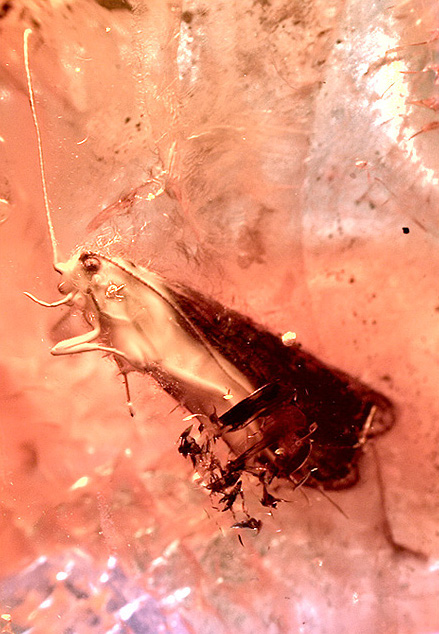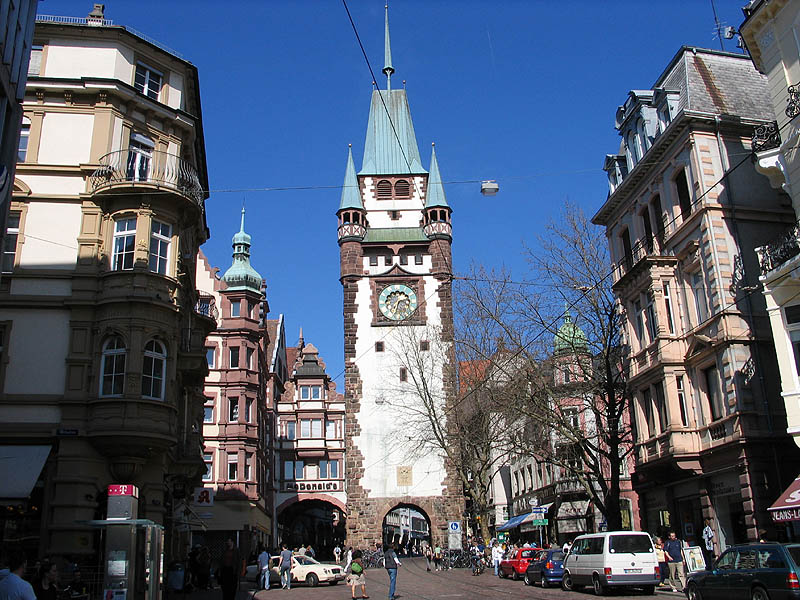|
Freiburg Bächle
The Freiburg Bächle are small water-filled runnels or formalised rills in the Black Forest city of Freiburg. They are supplied with water by the Dreisam and can be seen along most streets and alleyways in the old city, being one of the city's most famous landmarks. The word ''Bächle'' comes from the German ''Bach'', meaning brook, with the Alemannic diminutive ending ''-le''; in standard German, it is ''Bächlein''. History First documented in the 13th century, the Bächle once served as a water supply and were used to help fight fires. In the 19th century they were seen as obsolete, and most of them were covered with iron plates. The Bächle were seen by many (among them the ADAC) as a traffic hazard due to their original location in the middle of the road, and as a consequence they were moved to the edge of the roads in 1852. It is local superstition that if you accidentally step in the Bächle, you will marry a Freiburger. The first documented mention of the Bächle ... [...More Info...] [...Related Items...] OR: [Wikipedia] [Google] [Baidu] |
Fire Safety
Fire safety is the set of practices intended to reduce destruction caused by fire. Fire safety measures include those that are intended to prevent wikt:ignition, the ignition of an uncontrolled fire and those that are used to limit the spread and impact of a fire. Fire safety measures include those that are planned during the construction of a building or implemented in structures that are already standing and those that are taught or provided to occupants of the building. Threats to fire safety are commonly referred to as fire hazards. A fire hazard may include a situation that increases the likelihood of a fire or may impede fire escape, escape in the event a fire occurs. Fire safety is often a component of building code, building safety. Those who inspect buildings for violations of the Fire Code and go into schools to educate children on fire safety topics are Fire Department members known as ''Fire Prevention Officers''. The Chief Fire Prevention Officer or Chief of Fire ... [...More Info...] [...Related Items...] OR: [Wikipedia] [Google] [Baidu] |
Antonio De Beatis
Antonio de Beatis was an Italian canon (priest), canon best known for his travel diary of 1517–1518, a work of major value in art history. Life De Beatis was born in Molfetta, but the date of his birth is unknown. He served as a secretary to Cardinal Luigi d'Aragona during the latter's European tour of 1517–1518, in which capacity he recited the Liturgy of the Hours, divine office, helped prepare or even perform the Pre-Tridentine Mass, Mass and wrote letters on the cardinal's behalf. He kept a personal diary of the trip, with daily entries beginning with their departure from Ferrara on 9 May 1517 and ending with their return there on 26 January 1518, although the trip did not end until they reached Rome on 16 March. De Beatis made copies of his diary for friends, including the humanist Antonio Seripando. He was still making copies into 1521. The date of his death is unknown. Travel diary Only one of the three copies of De Beatis's diary to be examined by scholars had a title ... [...More Info...] [...Related Items...] OR: [Wikipedia] [Google] [Baidu] |
Gerhard Schröder
Gerhard Fritz Kurt Schröder (; born 7 April 1944) is a German former politician and Lobbying, lobbyist who served as Chancellor of Germany from 1998 to 2005. From 1999 to 2004, he was also the Leader of the Social Democratic Party of Germany (SPD). As chancellor, he led a coalition government of the SPD and Alliance 90/The Greens. Since leaving public office, Schröder has worked for Russian state-owned energy companies, including Nord Stream AG, Rosneft, and Gazprom. Schröder was a lawyer before becoming a full-time politician, and he was Minister President of Lower Saxony (1990–1998) before becoming chancellor. Replacing the longest-ruling chancellor in modern German history, Helmut Kohl (CDU), in the 1998 German federal election, 1998 federal election, he tried to address unemployment and poverty with the Agenda 2010 labour market reform, which increased Hartz IV, welfare benefits. Together with French president Jacques Chirac, in 2003, he did not join the Coalition of the ... [...More Info...] [...Related Items...] OR: [Wikipedia] [Google] [Baidu] |
Ruth Merten
Ruth (or its variants) may refer to: Places France * Château de Ruthie, castle in the commune of Aussurucq in the Pyrénées-Atlantiques département of France Switzerland * Ruth, a hamlet in Cologny United States * Ruth, Alabama * Ruth, Arkansas * Ruth, California * Ruth, Louisiana * Ruth, Kentucky * Ruth, Michigan * Ruth, Mississippi * Ruth, Nevada * Ruth, North Carolina * Ruth, Virginia * Ruth, Washington * Ruth, West Virginia In space * Ruth (lunar crater), crater on the Moon * Ruth (Venusian crater), crater on Venus * 798 Ruth, asteroid People * Ruth (biblical figure) * Ruth (given name) contains list of namesakes including fictional * Princess Ruth or Keʻelikōlani, (1826–1883), Hawaiian princess Surname * A. S. Ruth, American politician * Babe Ruth (1895–1948), American baseball player * Connie Ruth, American politician * Earl B. Ruth (1916–1989), American politician * Elizabeth Ruth, Canadian novelist * Heidi Ruth (born 1996), American soccer player ... [...More Info...] [...Related Items...] OR: [Wikipedia] [Google] [Baidu] |
Klaus Eberhartinger
Klaus Eberhartinger (born 12 June 1950 in Gmunden, Upper Austria) is an Austrian singer and television presenter. Eberhartinger grew up and graduated in Braunau am Inn in 1968. He then lived in the United States of America for a year before he began his medical studies in Graz. It was in Graz, where he met the sister of Thomas Spitzer, who had founded the band Erste Allgemeine Verunsicherung (E.A.V.). Eberhartinger went on to interrupt his studies, take on various jobs in Munich, and buy a Land Rover to travel throughout Africa. He returned to Austria and resumed his studies in Graz until 1981 when he joined Thomas Spitzer's band Erste Allgemeine Verunsicherung and played an important role in paving its road to success. In 1985, Klaus Eberhartinger's son, Christopher was born, who went on to study in Barcelona at a business school. Klaus Eberhartinger is still close to his mother and she takes care of his financial affairs. Since the mid-90s Eberhartinger usually spends half ... [...More Info...] [...Related Items...] OR: [Wikipedia] [Google] [Baidu] |
Caddisflies
The caddisflies (order Trichoptera) are a group of insects with aquatic larvae and terrestrial adults. There are approximately 14,500 described species, most of which can be divided into the suborders Integripalpia and Annulipalpia on the basis of the adult mouthparts. Integripalpian larvae construct a portable casing to protect themselves as they move around looking for food, while annulipalpian larvae make themselves a fixed retreat in which they remain, waiting for food to come to them. The affinities of the small third suborder Spicipalpia are unclear, and Molecular phylogenetics, molecular analysis suggests it may not be monophyletic. Also called sedge-flies or rail-flies, the adults are small moth-like insects with two pairs of hairy membranous insect wing, wings. They are closely related to the Lepidoptera (moths and butterflies) which have scales on their wings; the two orders together form the superorder Amphiesmenoptera. The aquatic larvae are found in a wide variety o ... [...More Info...] [...Related Items...] OR: [Wikipedia] [Google] [Baidu] |
Mayflies
Mayflies (also known as shadflies or fishflies in Canada and the upper Midwestern United States, as Canadian soldiers in the American Great Lakes region, and as up-winged flies in the United Kingdom) are aquatic insects belonging to the order (biology), order Ephemeroptera. This order is part of an ancient group of insects termed the Palaeoptera, which also contains dragonflies and damselflies. Over 3,000 species of mayfly are known worldwide, grouped into over 400 genera in 42 family (biology), families. Mayflies have ancestral traits that were probably present in the first flying insects, such as long tails and Insect wing, wings that do not fold flat over the insect morphology#Abdomen, abdomen. Their immature stages are aquatic fresh water forms (called "naiads" or "nymph (biology), nymphs"), whose presence indicates a clean, unpolluted and highly oxygenated aquatic environment. They are unique among insect orders in having a fully winged terrestrial preadult stage, the sub ... [...More Info...] [...Related Items...] OR: [Wikipedia] [Google] [Baidu] |
Schwabentor (Freiburg Im Breisgau)
The Schwabentor (English Swabian Gate), also called Obertor in the Middle Ages, is the more recent of the two remaining city gates of the medieval defensive wall of Freiburg im Breisgau in Baden-Württemberg, Germany. History The gate tower built around 1250 was originally open towards the inside of the city and was only enclosed with a stone wall in 1547. In 1572, a stair turret was added; in the same year Matthias Schwäri painted a picture of a merchant with a cart on the inner wall. In the 19th century, this picture sparked a legend about a Swabian man who came to Freiburg with two barrels full of gold to buy the town. He was ridiculed, especially after it turned out that the barrels only contained sand and pebbles. Before his departure, his wife had secretly replaced the gold with a worthless filling. Until 1900 the Schwabentor remained mostly unchanged. Then it was almost doubled in height according to the design of Carl Schäfer and equipped with a crow-stepped gable mode ... [...More Info...] [...Related Items...] OR: [Wikipedia] [Google] [Baidu] |
Martinstor
The Martinstor (English ''Martin's Gate''), a former town fortification on Kaiser-Joseph-Straße, is the older of the two gates of Freiburg im Breisgau, Germany, that have been preserved since medieval times. Both gates, the Martinstor and the Schwabentor, are located in the city centre. In medieval times the Martinstor was also known as ''Norsinger Tor''. History According to Dendrochronology, dendrochronological research the wooden beams date back to the year 1202; the gate was first given documentary evidence in 1238 as ''"Porta Sancti Martini"'' (Latin ''Gate of the Holy Martin''). Over the centuries it has been reconstructed several times. At one time, it also served as a prison and it was said of its occupants that they had donned "The Cloak of Martin". From the 17th century on the side of the gate facing the city was decorated with a picture of Martin of Tours. During this time, due to the construction and leveling of the suburbs by Sébastien Le Prestre de Vauban, the ga ... [...More Info...] [...Related Items...] OR: [Wikipedia] [Google] [Baidu] |
Tramway Track
Tramway track is used on tramways or light rail operations. As with standard rail tracks, tram tracks have two parallel steel rails, the distance between the heads of the rails being the track gauge. When there is no need for pedestrians or road vehicles to traverse the track, conventional flat-bottom rail is used. However, when such traffic exists, such as in urban streets, grooved rails are used. Tram rails can be placed on several surfaces, such as on ground over which track ballast topped by sleepers (US: ties) and flat-bottom rails are laid – as with railway tracks – or, for street running, with grooved rails usually embedded into a concrete pavement. In some places, tracks are laid into grass turf surfaces; they are known as '' green track'', ''grassed track'' or ''track in lawn''. History Tramway tracks have been in existence since the mid-16th century. They were made of wood, but during the late 18th century iron and later steel came into use and then ... [...More Info...] [...Related Items...] OR: [Wikipedia] [Google] [Baidu] |
Tram
A tram (also known as a streetcar or trolley in Canada and the United States) is an urban rail transit in which Rolling stock, vehicles, whether individual railcars or multiple-unit trains, run on tramway tracks on urban public streets; some include segments on segregated Right-of-way (property access), right-of-way. The tramlines or tram networks operated as public transport are called tramways or simply trams/streetcars. Because of their close similarities, trams are commonly included in the wider term ''light rail'', which also includes systems separated from other traffic. Tram vehicles are usually lighter and shorter than Main line (railway), main line and rapid transit trains. Most trams use electrical power, usually fed by a Pantograph (transport), pantograph sliding on an overhead line; older systems may use a trolley pole or a bow collector. In some cases, a contact shoe on a third rail is used. If necessary, they may have dual power systems—electricity in city stre ... [...More Info...] [...Related Items...] OR: [Wikipedia] [Google] [Baidu] |









